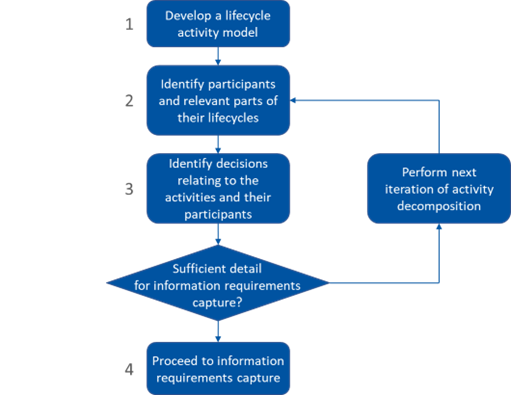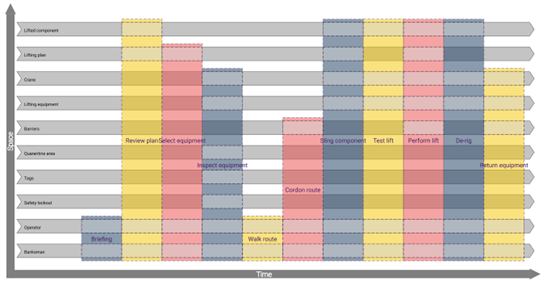Introduction to Activity Modelling
Activity happens all the time: the wind blows, seasons pass and the sun's fusion radiates photons and other subatomic particles throughout the solar system. Human activity is also part of the range of activities. Keeping track of intended and actual activities is hard, especially when it is the participants in those activities that set their context and determine what the result is. A participant can be anything material that is involved intentionally or by virtue of its interaction with other participants (e.g. the environment itself or the floor of a building in which activity of interest is taking place).
Whether a participant is significant-enough to warrant inclusion in a model is ultimately a decision, a decision based on whether there is a need for information records of it. For business activity lifecycles, the only need for information is to support decisions in those, or other, business activities. This page introduces a basic method for analysing activities and their participants to enable activity models to be developed to support subsequent information system development.

Step 1: Develop an initial lifecycle activity model
An activity lifecycle is a decomposition of possible activities that represents a pattern of activity from the start to the end of something. This is typically business or organisational activities. To get started an initial set of activities should be created, around which the activity analysis and decomposition can be done.
Step 2: Identify participants in each activity
Why are participants important? Firstly, they are the only things involved in activities. If something else is involved, then it is also a participant. Secondly, these participants each have lifecycles of their own.
For example, a nut used on a production line will have been manufactured and sourced independently of a torque wrench used to tighten it and the robot manipulating the torque wrench. Each item modelled has an identity that can be used to create and query for records at any point in its lifecycle (at least, if we arrange for the data records to be managed in a way that allows for this).
Step 3: Identify decisions relating to those activities
Identifying the decisions that require information should be an easy task once Steps 1 & 2 have been completed sufficiently. If not, further iterations of those steps will be needed.
When done in enough detail, decisions tend to be needed at the start and end of activities.
Step 4: Proceed to information requirements capture
Once the activity lifecycle has been captured with the participants it is now ready for information requirements capture to support the decisions. The activity model from the Activity Modeller can be used to analyse what information is needed relating to each participant to support any other decision in the activity lifecycle.
Data from the Activity Modeller can serve as a record of the analysis of, and decisions made, for information requirements capture. The full draft methodology for implementing information systems based on this analysis is available for trial use here.
